The Ultimate Guide to External Wall Insulation: Boost Your Energy Efficiency and Protect Your Home
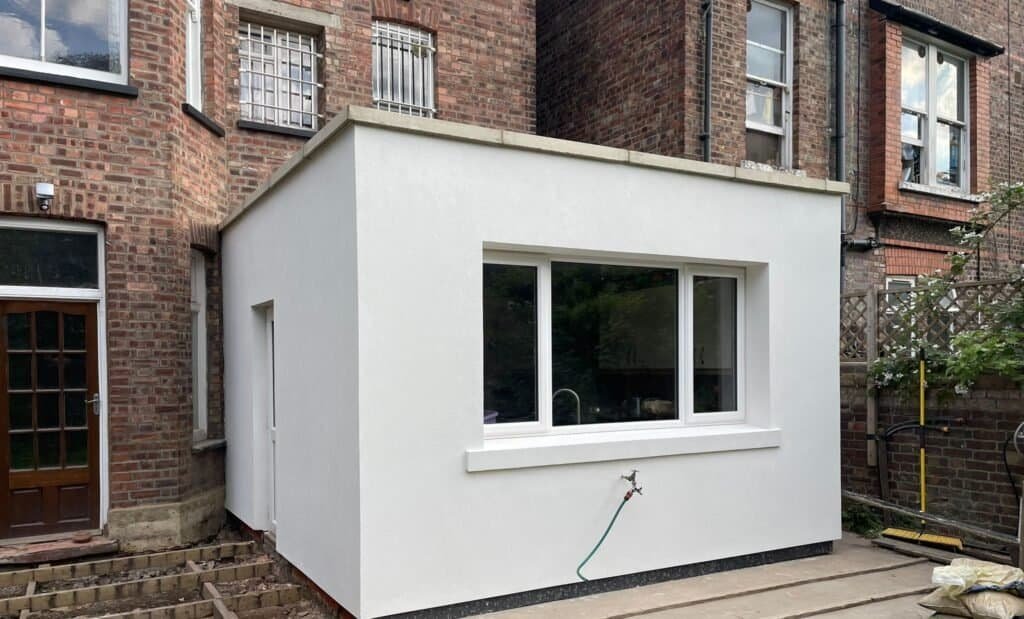
Are you tired of high energy bills and a home that feels drafty? External wall insulation might be the best solution to boost your homes energy efficiency and protect it from draughts, damp and mould. In this guide, we will walk you through everything you need to know about this solution.
External wall insulation is a smart investment which can significantly reduce heat loss, keep your home warm in winter and cool in the summer, ultimately save you money on energy bills. But it doesn’t stop there. This innovative system also acts as a protective barrier, shielding your home from the elements, preventing dampness, preserving your property’s lifespan and increase its value.
Whether you are looking to improve the thermal performance of your home, increase its market value or simply enhance its look, external wall insulation has got you covered. From the materials used to the installation process and the costs involved, we will look into every aspect of this transformative upgrade.
Say goodbye to energy inefficiency and hello to a more comfortable and sustainable home with external wall insulation. Let’s get started on optimizing your insulation game!
1. Understanding External Wall Insulation
External wall insulation, also known as solid wall insulation or simply EWI, is a method of insulating the external walls of a building to improve its energy efficiency. Unlike cavity wall insulation, which fills the gap between the inner and outer walls, external wall insulation involves adding an insulating layer to the outside of the walls. This layer acts as a thermal barrier, preventing heat loss and reducing energy consumption.
One of the key advantages of external wall insulation is its ability to enhance the thermal performance of older homes with solid walls that lack cavity insulation. These properties tend to lose heat at a faster rate, resulting in higher heating bills and reduced comfort levels. By insulating the external walls, you can significantly reduce heat loss, create a more consistent indoor temperature, and ultimately save money on energy bills.
Additionally, external wall insulation can help regulate the temperature inside your home, keeping it cool in the summer and warm in the winter. This can greatly improve your overall comfort and reduce the need for excessive heating or cooling.
But the benefits of EWI go beyond energy efficiency. This method also offers excellent sound insulation properties, reducing noise pollution from outside sources. It can also improve the overall appearance of your home, as the insulating layer can be finished with various decorative finishes, such as render or cladding, transforming the exterior aesthetics.
2. Benefits of External Wall Insulation
External wall insulation offers a wide range of benefits for homeowners. Let’s explore some of the key advantages:
- Improved Energy Efficiency: EWI creates a thermal barrier that reduces heat loss and minimizes energy consumption. This leads to lower energy bills and a more sustainable home.
- Enhanced Comfort: By regulating the indoor temperature, EWI ensures a more comfortable living environment throughout the year. Say goodbye to cold spots and drafty rooms!
- Reduced Condensation and Dampness: The insulating layer acts as a protective barrier, preventing condensation and dampness from seeping into your home. This helps preserve the structural integrity of your property and avoids potential health issues associated with dampness.
- Increased Property Value: EWI can significantly enhance the market value of your home. Energy-efficient properties are highly sought after, and this upgrade can make your property more attractive to potential buyers.
- Noise Reduction: EWI also provides excellent sound insulation, reducing noise pollution from outside sources. Enjoy a quieter and more peaceful living environment.
- Visual Transformation: With a wide range of decorative finishes available, external wall insulation can completely transform the exterior appearance of your home. Choose from various colours, textures, and designs to create a personalized and stylish look.

3. Types of EWI Materials
When it comes to external wall insulation, there are several types of materials to choose from. Each material has its own unique properties and suitability for different applications. Let’s explore some of the most commonly used EWI materials:
- Expanded Polystyrene (EPS): EPS is a lightweight and cost-effective insulation material that is commonly used in external wall insulation systems. It provides excellent thermal insulation properties and is easy to install. EPS can be shaped to fit any wall surface and is available in different thicknesses to meet specific insulation requirements.
- Mineral Wool: Mineral wool, also known as rock wool or stone wool, is a popular choice for external wall insulation. It is made from natural minerals such as basalt or diabase and offers excellent thermal and acoustic insulation properties. Mineral wool is fire-resistant and provides good moisture resistance, making it suitable for both residential and commercial applications.
- Phenolic Foam: Phenolic foam is a high-performance insulation material that offers superior thermal efficiency. It is lightweight, moisture-resistant, and has excellent fire-resistant properties. Phenolic foam panels are thin, which makes them ideal for situations where space is limited. This material is often used in new construction projects or when retrofitting existing buildings.
- Polyurethane (PUR): Polyurethane is a versatile insulation material that provides excellent thermal performance. It has a high insulation value and is particularly effective in reducing heat loss. Polyurethane panels are lightweight and easy to handle, making them suitable for both new build and renovation projects.
4. Assessing your Home for External Wall Insulation
Before embarking on an external wall insulation project, it’s important to assess your home’s suitability for this type of upgrade. Here are some key factors to consider:
- Wall Type: EWI is most commonly used for solid walls, as they tend to have higher heat loss compared to cavity walls. However, certain cavity wall constructions, such as those with narrow cavities or poor insulation, may also benefit from external wall insulation.
- Structural Condition: It’s essential to assess the structural condition of your walls before installing EWI. Any existing issues, such as cracks or dampness, should be addressed prior to insulation to ensure long-term performance.
- Planning Permission: In some cases, EWI may require planning permission, especially if your property is located in a conservation area or has specific architectural restrictions. Check with your local planning authority to determine if any permissions are required.
- Access: Consider the accessibility of your walls for installation. If your property is located in a tight space or has limited access, additional considerations may be necessary.
- Insulation Thickness: The thickness of the insulation required will depend on various factors, including the desired level of thermal performance and the existing insulation properties of your walls. A professional assessment can help determine the optimal insulation thickness for your home.
By carefully assessing these factors, you can ensure that external wall insulation is the right solution for your home and that the installation process will be smooth and effective.
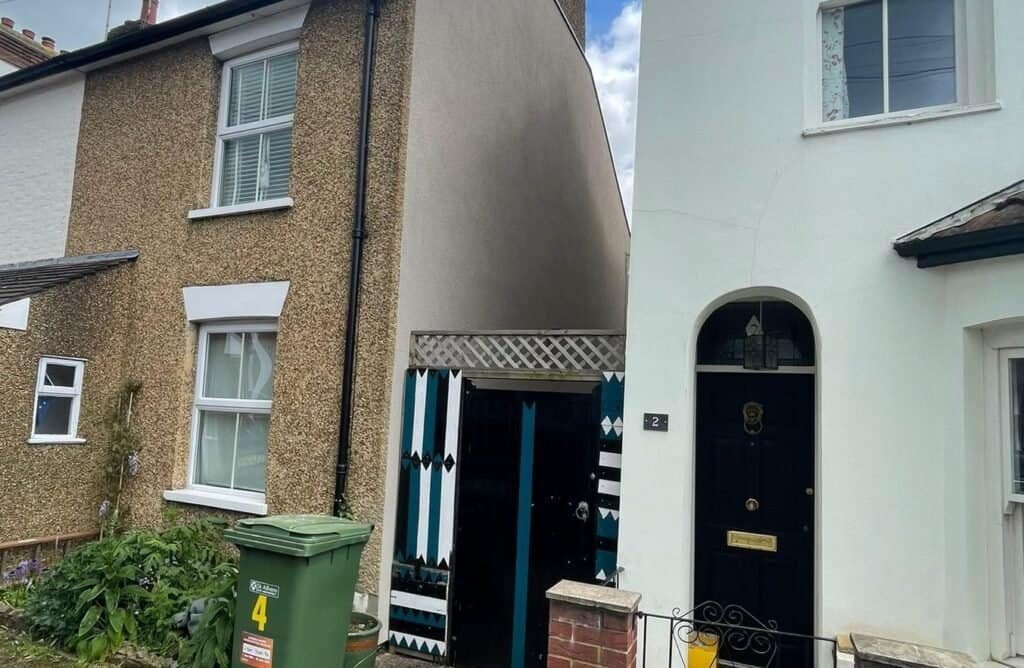
5. The Installation Process of EWI
Installing external wall insulation involves several key steps and requires professional expertise. Here’s an overview of the typical installation process:
- Preparation: The first step is to prepare the walls for insulation. This may involve cleaning the surface, repairing any cracks or damage, and ensuring a smooth and even substrate for the insulation to be applied.
- Insulation Fixing: The insulation panels are then fixed to the walls using adhesive or mechanical fixings. The type of fixing method will depend on the chosen insulation material and the specific requirements of your property.
- Insulation Layer: Once the insulation panels are securely fixed, an additional layer of insulation material, often referred to as a base coat, is applied. This layer helps to provide a smooth and even surface for the final decorative finish.
- Decorative Finish: The final step is to apply the chosen decorative finish, such as render or cladding, to the insulation layer. This finish not only enhances the visual appearance of your home but also provides additional protection against the elements.
Throughout the installation process, it’s crucial to work with experienced professionals who specialize in external wall insulation. They will ensure that the correct materials are used, the installation is carried out to high standards and all necessary regulations and safety measures are followed.
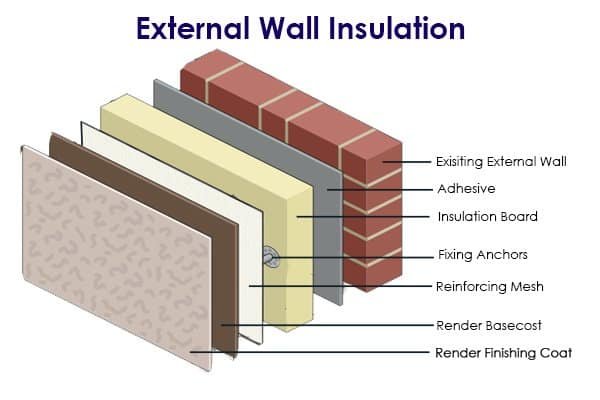
6. External Wall Insulation Cost and Savings
The cost of external wall insulation can vary depending on several factors, including the size of your property, the chosen insulation material, the level of preparation required, and the complexity of the installation. It’s best to obtain quotes from reputable insulation contractors to get an accurate estimate for your specific project.
While the initial cost of EWI may seem significant, it’s important to consider the long-term savings and benefits. By improving the energy efficiency of your home, you can expect to see a significant reduction in your energy bills, which can help offset the initial investment over time. External wall insulation can provide ongoing savings and contribute to a more sustainable and cost-effective home.
In addition to energy savings, EWI can also increase the value of your property. Energy-efficient homes are in high demand, and this upgrade can make your property more attractive to potential buyers when the time comes to sell.
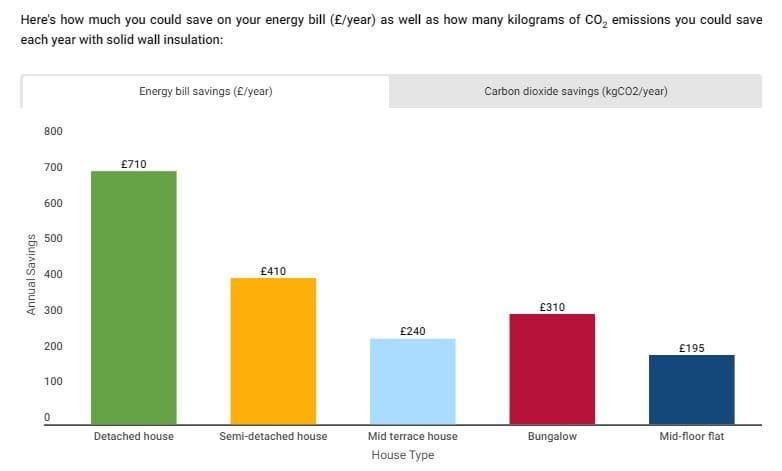
Source: energysavingtrust.co.uk (2023)
7. Maintaining and Caring for EWI
To ensure the longevity and performance of your external wall insulation, proper maintenance and care are essential. Here are some key tips to keep in mind:
- Regular Inspection: Schedule regular inspections of your EWI to identify any signs of damage, such as cracks, loose fixings, or water ingress. Address any issues promptly to prevent further damage.
- Cleaning: Depending on the chosen finish, you may need to clean your external wall periodically. Follow the manufacturer’s guidelines for cleaning and avoid using abrasive materials or harsh chemicals that could damage the insulation or finish.
- Gutter Maintenance: Proper gutter maintenance is crucial to prevent water from overflowing and saturating the external wall insulation. Keep gutters clear of debris and ensure they are functioning correctly.
- Ventilation: Adequate ventilation is essential to prevent moisture build-up within the insulation. Ensure that vents and airbricks are not obstructed and that the insulation system allows for proper airflow.
- Professional Maintenance: Consider scheduling professional maintenance checks every few years to assess the condition of your external wall insulation and identify any potential issues that may require attention.
By following these maintenance guidelines, you can ensure that your external wall insulation continues to perform optimally and provides long-lasting benefits for your home.
8. External Wall Insulation Regulations and Certifications
When considering external wall insulation, it’s important to be aware of the relevant regulations and certifications. Here are some key points to consider:
- Building Regulations: EWI projects must comply with relevant building regulations to ensure the safety, performance, and quality of the installation. Consult your local building control authority to determine the specific requirements for your area.
- Certifications and Guarantees: Look for external wall insulation systems that have been independently tested and certified for their performance and durability. These certifications provide assurance that the product meets industry standards and will perform as expected.
- Insulation Grants and Incentives: In some cases, there may be grants or incentives available to homeowners in the UK who install external wall insulation. These programs aim to promote energy efficiency and reduce carbon emissions. Check with local authorities or energy efficiency programs to see if you are eligible for any financial support.
Complying with regulations and choosing certified products and installers will ensure that your EWI meets the necessary standards and provides the expected benefits for your home.
9. Case Studies: Real-life Examples of Successful EWI Projects
To further illustrate the benefits and impact of external wall insulation, let’s explore some real-life case studies:
Case Study 1: The Smith Family
The Smith family lived in an old house with solid walls. They were experiencing significant heat loss and high energy bills. After installing external wall insulation, they noticed an immediate improvement in comfort and a substantial reduction in their energy bills. The new insulation also enhanced the appearance of their home and increased its market value.
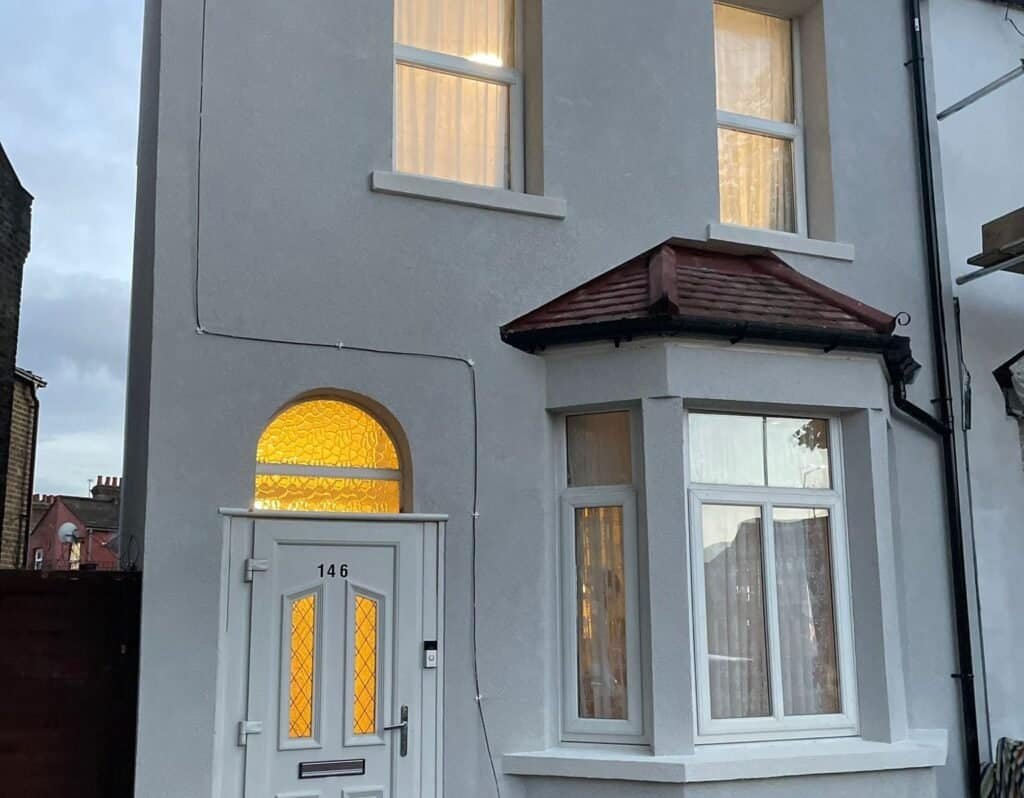
Case Study 2: The Johnsons' Bungalow:
The Johnsons lived in a bungalow that had poor insulation and frequent issues with dampness. They decided to invest in external wall insulation to address these problems. Not only did the insulation solve their dampness issues, but it also provided better temperature regulation and reduced noise from nearby traffic.

These case studies demonstrate the transformative effects of EWI on different types of properties. By addressing specific issues and improving overall energy efficiency, homeowners can enjoy a more comfortable and sustainable living environment.
10. Conclusion: Why External Wall Insulation is a Smart Investment for your Home
Investing in external wall insulation for your home is not just a nod towards sustainability; it’s a strategic decision that offers tangible benefits in terms of energy efficiency and cost savings. In an era where energy costs are continually rising, external wall insulation stands as a financially prudent choice, ensuring that your home remains energy-efficient while keeping your heating and cooling expenses in check.
The most immediate impact of EWI is seen in its ability to enhance the energy efficiency of your home. By effectively insulating your walls, you reduce the need for excessive heating in winter and cooling in summer. This optimized energy usage directly translates into lower utility bills, offering you significant cost savings in the long run. The return on investment with EWI is clear – it pays for itself over time through these energy savings.
Additionally, the benefits of external wall insulation extend to the overall value of your property. In today’s market, energy-efficient homes are not just a preference but a priority for many buyers. Thus, installing EWI can increase the market appeal and value of your property, making it a smart investment choice from a real estate perspective.
If you consider enhancing your home with external wall insulation, we are here to guide you through every step.
For personalized advice and a free, no-obligation quote on our EWI system, simply fill out the form at the bottom of our homepage. Our team is ready to assist you with your queries and help you make an informed decision about insulating your home. Transform your home into an energy-efficient space with external wall insulation. Reach out to us today to start your journey towards a smarter, more cost-effective home.
